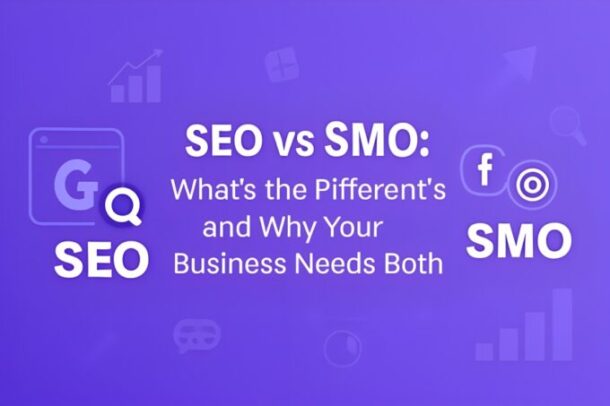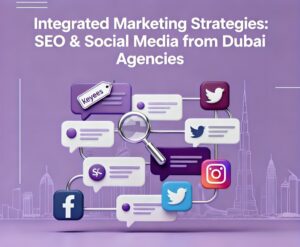Introduction
In today’s digital-first world, businesses cannot rely on a single channel to succeed online. While search engines remain powerful gateways for discovery, social platforms are where conversations, trust, and engagement truly thrive. That’s why the debate around SEO vs SMO has become so important for modern brands. Instead of choosing one over the other, companies need to understand how both strategies complement each other to deliver maximum results.
What is SEO?
Search Engine Optimization, or SEO, is the process of improving your website’s visibility in search engines like Google, Bing, and Yahoo. By carefully optimizing content, site structure, and backlinks, businesses can rank higher and attract quality traffic.
Some core aspects of SEO include:
-
Keyword research and placement
-
Technical optimization (page speed, mobile-friendliness, indexing)
-
Link building and authority growth
-
Content optimization for relevance and readability
With SEO, businesses tap into intent-driven audiences, meaning people who are already searching for products, services, or solutions related to their offerings.
What is SMO?
Social Media Optimization, or SMO, focuses on building brand awareness, engagement, and visibility through social platforms like Facebook, Instagram, LinkedIn, and X (formerly Twitter). Unlike SEO, which targets search intent, SMO captures attention by fostering conversations and relationships.
Key elements of SMO include:
-
Sharing engaging, share-worthy content
-
Using hashtags and trends to increase reach
-
Building communities and responding to comments
-
Aligning brand voice with audience preferences
SMO ensures that your business doesn’t just appear in search results but also becomes part of daily digital interactions.
SEO vs SMO: Breaking Down the Differences
When comparing SEO vs SMO, it’s essential to recognize that the two strategies serve different, yet interconnected, purposes.
-
Objective: SEO increases search visibility; SMO boosts social engagement.
-
Audience: SEO targets people with a clear intent; SMO targets a wider audience based on interests.
-
Longevity: SEO results often take time but are long-lasting; SMO results are more immediate but may require constant effort.
-
Content Type: SEO thrives on blogs, articles, and optimized landing pages; SMO thrives on visuals, videos, and interactive posts.
Ultimately, while SEO vs SMO may look like separate strategies, together they build a complete digital presence.
Why Your Business Needs Both
Instead of viewing SEO and SMO as competing, think of them as complementary gears in the same machine. Businesses that use both create more touchpoints with customers, reinforcing brand trust and recognition.
For instance, imagine your business ranks on Google for a key product, but your potential customer also follows you on Instagram, where they see behind-the-scenes stories or user testimonials. This combined exposure strengthens loyalty and drives conversions.
Benefits of combining SEO and SMO include:
-
Greater brand authority across channels
-
Higher chances of engagement and shares
-
More referral traffic and organic visibility
-
Stronger reputation management
-
Increased trust from both search engines and users
Common Challenges Businesses Face
While using SEO vs SMO together is highly effective, businesses often encounter challenges such as:
-
Limited budgets to allocate between SEO and social media campaigns
-
Difficulty maintaining consistent posting schedules and content strategies
-
A lack of skilled professionals who can balance both approaches
Overcoming these challenges requires a well-planned strategy, cross-team collaboration, and sometimes professional guidance.
Real-World Example
A Dubai-based retail brand, for example, optimized its product pages with SEO to rank higher for “luxury handbags.” Simultaneously, it ran interactive polls and influencer collaborations on Instagram to generate buzz. As a result, not only did traffic from Google increase, but Instagram also drove community-driven conversions. This showcases how SEO vs SMO work hand in hand.
Conclusion
In the end, it’s not about SEO vs SMO, but about how both strategies integrate to create a strong online ecosystem for your business. Companies like Insprago have demonstrated how combining search optimization with social engagement maximizes digital growth. By using both approaches together, businesses can truly thrive in today’s competitive environment. And to achieve long-term success, it’s crucial to invest in a balance of digital marketing strategies that leverage the strengths of both SEO and SMO.
FAQs on SEO vs SMO
1. What’s the main difference between SEO and SMO?
SEO focuses on improving visibility on search engines, while SMO focuses on boosting engagement on social platforms. Together, they expand reach and build trust.
2. When should businesses start using SEO and SMO?
The earlier, the better. Ideally, businesses should begin with SEO to build a strong foundation for visibility, while simultaneously introducing SMO to strengthen brand presence.
3. Why is it important to combine both SEO and SMO?
Because customers don’t just live in one channel. They search on Google, interact on social media, and make decisions based on both. Using both ensures maximum reach and impact.



















